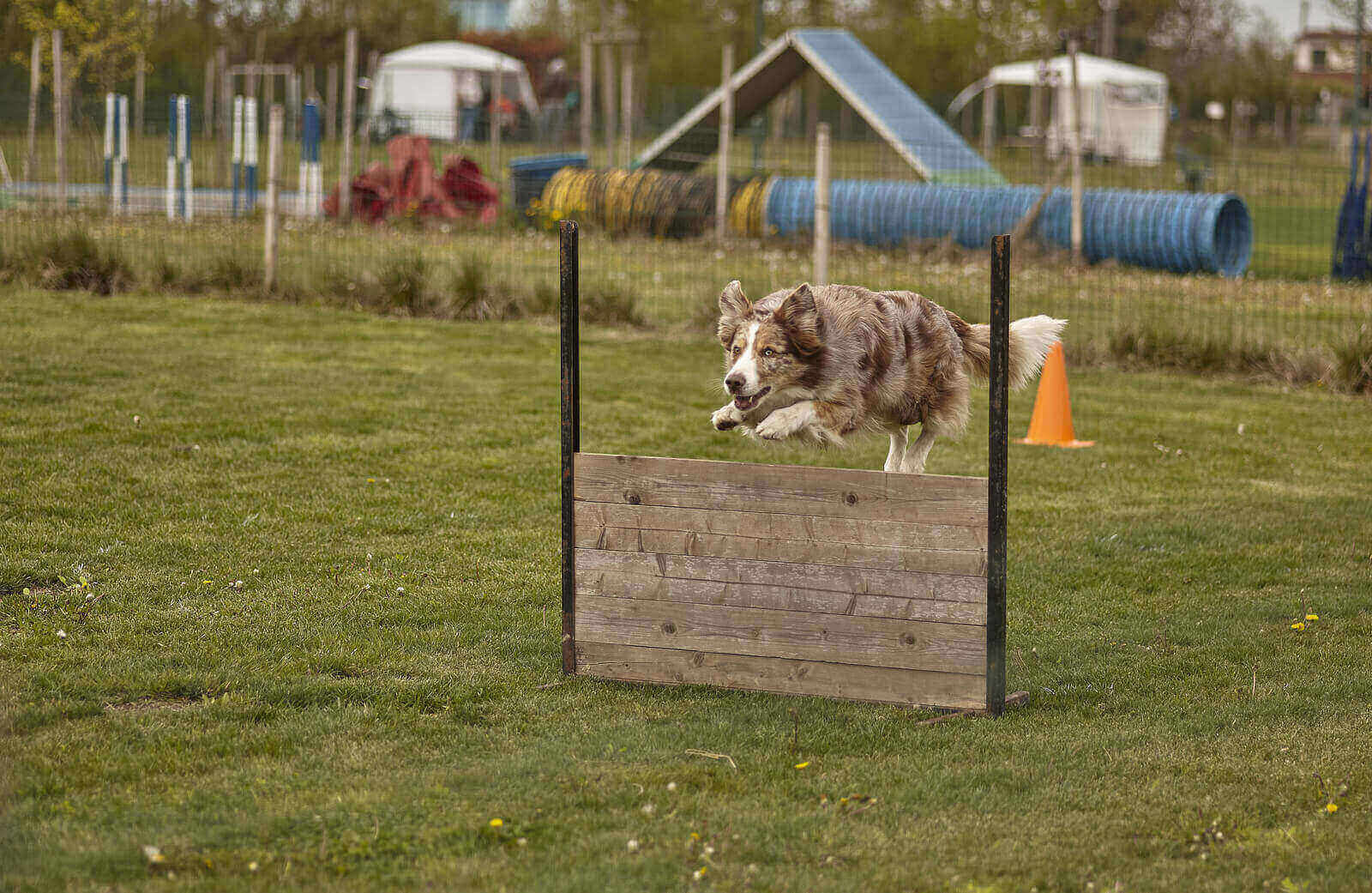It can be rather disconcerting to observe that your dog is still limping after cast removal. Upon making this observation, you will probably want to know why the dog is still limping after cast removal, and whether there is anything you can do about it. This article has the answers.
A dog limping after cast removal may be due to muscle weakness which had set in while the dog was in a cast. It may also be due to behavioral conditioning: where the dog had become used to relying more on one limb than the other. And it could also be due to residual pain.
Thankfully, with time, the dog usually stops limping. Whether it was a dog leg cast, dog body cast or any other cast, as long as it was put the right way, retained for the right amount of time, and removed in the right manner, the dog will probably stop limping in due course.
Nonetheless, if my dog just got his cast off, I would expect it to continue limping for a while.

It is worth remembering that if it was big enough to warrant dog casting, then it must have been a pretty nasty injury. Therefore upon the dog getting cast off, there may still be some limping for a while.
What may be necessary is supportive care after cast removal, through massages, cold therapy, range of motion exercises and so on.
That said, if the dog still limping after cast removal goes on for unreasonably long, then it may be worth taking the dog back to a vet.
Casting and splinting in dogs is a complex affair. Something or the other may have gone wrong: leaving the dog limping after cast removal for unreasonably long.
Is It Normal For A Dog To Limp After Cast Removal?
Once you notice that your dog is limping after cast removal, you are likely to have several questions. One of those is as to whether it is normal for a dog to limp after cast removal.
The truth of the matter is that it is quite normal for a dog to continue limping, for a short while, after cast removal.
Indeed, if you go through the various dog after cast removal Reddit threads, it becomes clear that this is a rather common thing.
Many dog owners report incidents of their dogs continuing to limp after cast removal.
Thus a dog limping after cast removal is a fairly common – and one would say normal – thing.
It is similar to how a dog still limping after broken leg surgery would be viewed as more or less a ‘normal’ thing.
Saying that it is a ‘normal’ thing does not, of course, mean that it is a ‘nice’ thing. It is unpleasant, but often inevitable.
Sometimes, it doesn’t stop with the limping. You even have the dog limping and licking leg (or any other limb) after cast removal.
Most of us expect that cast removal will be the end of the affair, as far as treatment for whichever injury was there goes.
The typically high dog cast cost doesn’t help either. After paying so much for the dog’s casting, we expect nothing but prompt healing.
But the reality is that in an animal broken leg (or any other limb) takes a while to heal. Healing continues, even after cast removal.
And that is how you end up with a dog limping after cast removal – or even dog limping after splint removal.
Why Is My Dog Limping After Cast Removal?
The moment you observe your dog limping after cast removal, you will probably want to know the reason behind it.
Suppose, for instance, it was a fractured leg that necessitated the casting. But now you find that the dog still limps after treatment of his fractured leg using a cast. That would surely raise questions: including this one on why the dog is still limping after cast removal.
Now there are several things that can make a dog continue limping after cast removal.
You may have a dog limping after cast removal due to muscle weakness.
Further, you may have a dog limping after cast removal due to behavioral conditioning.
And you may also have a dog limping after cast removal due to residual pain.
We will now proceed to look at each of these factors in turn.
Muscle Weakness As A Reason For Dog Limping After Cast Removal
The commonest reason for dogs limping after cast removal is muscle weakness.
Suppose what you had was a dog cast for back leg injury. Further, suppose the cast stayed there for several weeks. Those are weeks during which the dog wouldn’t have been using the leg.
Eventually, at the cast removal time, muscles weakness may have set in within the leg. In fact, if the cast was there for long enough, you may find that the muscles had atrophied.
Thus even when the dog back leg cast is removed, there would still be some limping. And this would go on, until the muscles become strong again. If they had atrophied, this would go on until they grow again…
If, for instance, a dog can’t extend limb after cast removal, this tends to be the reason behind it.
You have to remember that whenever we have a dog with leg cast, it effectively can’t use the leg for the duration that the cast is there. That is what leads to this sort of muscle weakness, and sometimes even atrophy.
This applies to all limbs in a dog’s body. Even a paw cast for dogs can bring about this effect.
In fact, even in a case of cat still limping after cast removal, one possibility would be that of it being due to this muscle weakness.
Behavioral Condition As A Reason For Dog Limping After Cast Removal
If you notice your dog still limping after cast removal, that may be due to behavioral conditioning.
You see, for the duration that the dog was in a cast, it had come to learn to rely more on the other limb.
Now even after cast removal, the dog takes some time to unlearn. For the time being, it continues relying on the other limb: hence the limping.
In a case where my dog is out of a cast after braking his leg, he is limping, this may be the reason for it.
Learnt behaviors usually take a while to be unlearnt.
For the duration that the injury was there, the dog may have come to figure out that there is pain whenever it exerts force on the injured limb.
Even when treatment is complete, the dog may still fear exerting force on the injured limb for this reason. So it relies more on the opposite limb, resulting in limping.
In this case, even when you take the previous broken dog leg x ray, it may reveal that there is complete healing. But, due to past experiences, you find that the dog is still hesitant to use the leg. So it limps on the other leg.

Residual Pain As A Reason For Dog Limping After Cast Removal
There are instances where, even after removing the cast on dog limb, there is residual pain.
This residual pain can make a dog continue limping for as long as it is there.
For instance, if there is a pain in leg after cast removal, the dog will continue relying more on the opposite leg. And this will bring about limping.
This effect is observable even with regard to full body casts. So in a dog full body cast removal may leave some residual pain. But if the cast was specifically on a limb, then there may be limping.
You have to remember if an injury justified encumbering a dog with cast, then it probably was a quite serious injury. Therefore it may take time to heal, even after the removal of the cast.
Do dogs get casts for broken bones? The answer is ‘yes’ in some cases. And knowing how painful broken bones can be, it would be expectable for there to be residual pain even after removal of the casts.
There are also instances where the procedure of removing the cast induces some pain. For instance, figuring out how to cast a dog’s leg properly, and how to remove the cast properly at the right time can be challenging.
If the cast removal is not done well, there may be residual pain, which results in limping. Thankfully, this normally doesn’t last long.
There are also instances where infections may have set in, while the limp was in a cast. Sometimes, these get so bad that the dog cast smells at removal time. The pain from the said infection may be what causes the dog to continue limping after cast removal.
How Long Does It Take For A Dog To Stop Limping After Cast Removal?
People who observe their dogs limping after cast removal often express interest in knowing how long it may take for the dogs to stop limping.
You will also often hear a dog owner asking, will dog limping go away on its own after cast removal?
Now the limping after cast removal may stop after just a few days. But there are also cases where it goes on for several months.
Much depends on the nature of the injury that necessitated the casting in the first place, and how long the cast remained in place.
Suppose, for instance, the cast stayed in place for many months. Then muscle atrophy may have occurred. Therefore it can be many months before the muscles grow again, to a point where the dog stops limping.
The age of the dog matters too. For instance, for a puppy with limp post-broken leg recovery may take shorter time.
What makes the puppy broken leg recovery faster is the fact that its growth hormones (which also promote healing) are at their peak.
The manner in which the casting was undertaken may also be a factor. Take a case where dogs’ cast keeps coming off, thus hampering healing. In that case, there may also be problems in the period after the cast’s removal.
By the way, the same would apply in a case where a dogs splint keeps coming off. There may be problems even after the splint removal. Even if a cat splint came off, the outcomes may be along these lines…
So how well the cast was put on, and how well it was removed, may be a factor.
The limping may stop after a few days. Or it may go on for quite as many as 3 months.
Dog Limping After Cast Removal – What Should I Do About It?
One useful approach you can use is that of putting the dog through exercises that strengthen its muscles. If muscle weakness during the period that the dog was in a cast is the reason for its limping, this can be very helpful.
Some of the exercises in this regard may be walking exercises. But that brings about an interesting question: how long does it take to walk after cast removal for a dog?
And the answer is that, in most cases, the dogs can start walking short distances a few days after cast removal.
But full blast walking may wait for weeks. Usually, when the dog completely stops limping is a good indication that it is ready to start full walking again.
The whole thing is akin to asking, can a dog walk with a splint? There, you tend to find that only minimal walking is allowable, until there is full recovery.
Sometimes, the dog limping after cast removal may be due to behavioral conditioning. The dog may simply have gotten used to limping. So it continues to do so, even after the cast removal.
So what you need to do in this case is get the dog to unlearn this behavior. Encourage it to apply pressure on the previously casted limb, and reward it when it does so successfully.
Residual pain is the other factor that may cause a dog to continue limping after cast removal. So, for instance, you find that there is still some pain in dog leg after cast removal.
This may get you wondering, can I give my dog anything for limping? And the answer is ‘yes’. There are some pain medications you may use, though it is ideal to get a prescription from a vet after examining the dog.
Final Verdict – Dog Limping After Cast Removal
If you have a dog still limping after cast removal, that may be due to muscle weakness which set in while the dog was in the cast.

But it may also be due to behavioral conditioning, where the dog had become used to limping for the duration it was in a cast. Further, it could be due to residual pain.
If the limping is due to muscle weakness, exercises that strengthen muscles in the affected limb may be helpful.
In case the limping is due to behavioral conditioning, what may be necessary is to get the dog to unlearn the limping behavior.
And if the limping is due to residual pain, there are pain medications that can be quite helpful.
As a pet lover, make sure to learn about pet more and give your pet dog a good and comfortable life!

Welcome to Learn About Pet. My name is Rajkumar Ravichandran and I love all pets, travel, and amazing food. I write about my passion and personal experience caring for multiple pets in this blog! ❤️
Post Disclaimer
DISCLAIMER: THIS BLOG OR WEBSITE, "Learn About Pet", DOES NOT PROVIDE YOU WITH MEDICAL ADVICE AND IS NOT A SUBSTITUTE FOR MEDICAL ADVICE. ALWAYS GET IN TOUCH WITH YOUR PERSONAL VETERINARIAN AND USE INFORMATION HERE AS GENERAL ADVICE.
The information, including but not limited to, text, graphics, images and other material contained on this website are for informational purposes only. No material on this site is intended to be a substitute for professional veterinary advice, food recommendation, diagnosis, or treatment. Always seek the advice of your veterinarian or other qualified health care provider with any questions you may have regarding a medical condition or for pet food related questions.







